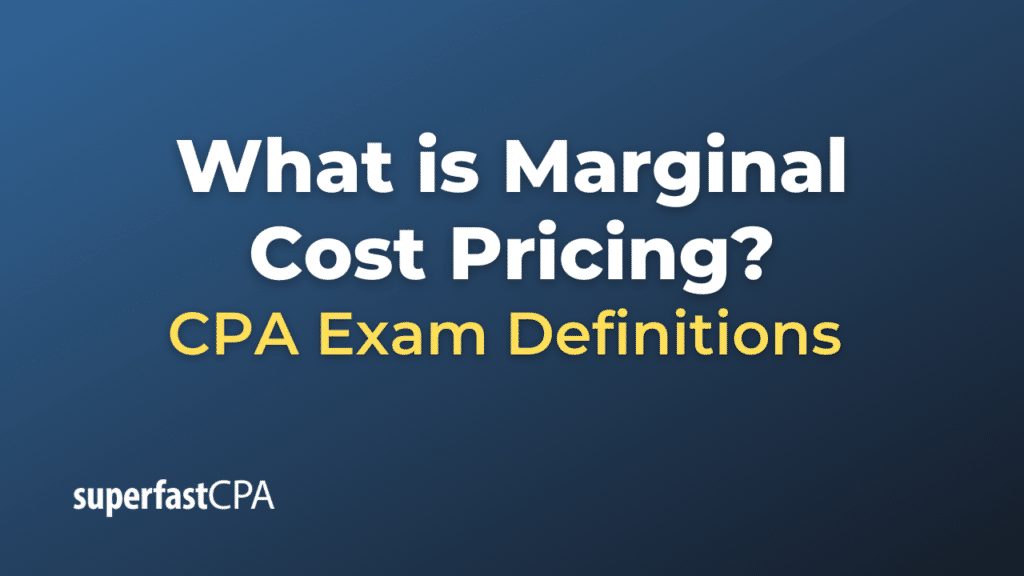Marginal Cost Pricing
Marginal cost pricing is a pricing strategy where a business sets the price of its product equal to (or slightly above) the marginal cost of producing an extra unit of output. In other words, the price is set equal to the cost to produce one additional unit of the product. This pricing strategy is typically used in perfectly competitive markets or by firms aiming to maximize social welfare.
It’s important to note that marginal cost pricing does not account for the total cost of production, including fixed costs (like rent or salaries), that do not change with the quantity produced. Therefore, while marginal cost pricing can help a company price its products in a way that maximizes the quantity sold, it may not necessarily maximize profits, especially if fixed costs are high.
In some cases, government regulations or public policies may require certain types of businesses, such as utilities and other public services, to use marginal cost pricing to prevent these companies from setting excessively high prices. These are situations where the company is a monopoly or near-monopoly, and it’s necessary to protect consumers’ interests.
It’s also a strategy used when businesses want to increase market share quickly, by offering goods or services at a low price to attract more customers. However, a company would need to ensure it can cover all its variable costs, or it would end up making losses.
Example of Marginal Cost Pricing
Imagine a company named “EnergyFlow” that generates and supplies electricity. Let’s assume that the marginal cost of producing an additional kilowatt-hour (kWh) of electricity is $0.10. This is the cost associated with the extra resources required to produce that additional unit of electricity.
If EnergyFlow adopts a marginal cost pricing strategy, they would set the price of their electricity at or slightly above this marginal cost—let’s say $0.11 per kWh. This price would cover the cost of producing each additional kWh of electricity and would include a small profit margin.
By using this pricing strategy, EnergyFlow ensures that they can sell the maximum amount of electricity to their customers, as the price is very competitive. However, they need to ensure they have a high volume of sales to cover their fixed costs (like infrastructure, equipment, and salaries), which are not taken into account in the marginal cost.
This strategy may also be used when the company wants to penetrate a new market quickly, gain market share, or when there’s a need to utilize a surplus production capacity.














